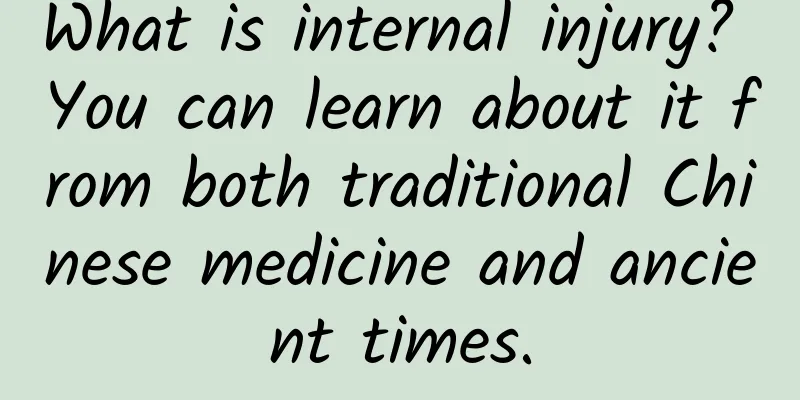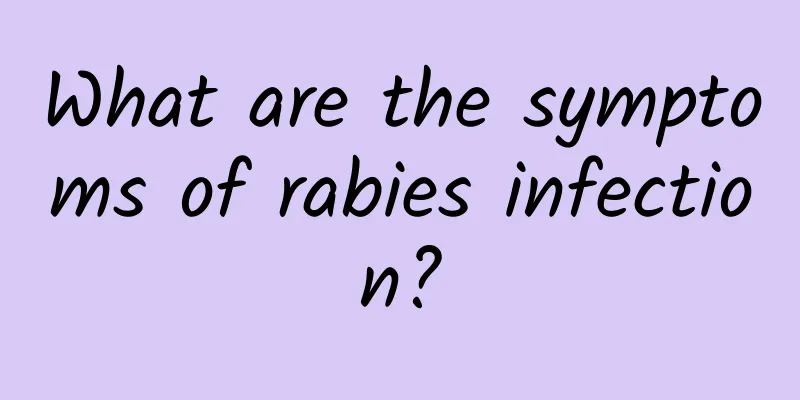How to treat cerebral infarction? Teach you the correct treatment method

|
Cerebral infarction is a common and serious clinical disease. Generally speaking, after people find out that they have cerebral infarction, they should receive timely treatment for the disease. So, how to treat cerebral infarction? 1. General treatment in the acute phase The principle of treatment is to improve blood circulation in the ischemic area of the brain as soon as possible and promote recovery of neurological function. During the acute phase, patients should rest in bed as much as possible, strengthen care of the skin, oral cavity, respiratory tract, and urination and defecation, and pay attention to the balance of water and electrolytes. If the patient is still unable to eat on his own 48 to 72 hours after onset, he should be given nasogastric liquid diet to ensure nutritional supply. The patient's daily care, diet, and treatment of other complications should be given priority. Since some patients with cerebral infarction cannot take care of themselves in the acute phase and even have difficulty swallowing, if they are not given proper nutrition, energy metabolism problems will quickly arise. At this time, even if the treatment medication is good, it is difficult to achieve good treatment results. 2. Treatment of cerebral edema (1) Mannitol is commonly used in clinical practice in the form of 20% mannitol hypertonic solution. Mannitol is one of the most commonly used and effective dehydrating agents. (2) 10% glycerol fructose can produce pharmacological effects through hypertonic dehydration. It can also utilize the energy generated by glycerol metabolism into the brain metabolism process, thereby improving local metabolism. Through the above effects, it can reduce intracranial pressure and intraocular pressure, eliminate cerebral edema, increase cerebral blood volume and cerebral oxygen consumption, and improve brain metabolism. (3) Diuretic dehydration agents such as furosemide (Lasix) and sodium urate can be injected intermittently intramuscularly or intravenously. (4) Adrenal cortical hormones are mainly glucocorticoids such as hydrocortisone and cortisone. Their secretion and production are regulated by corticotropin. They have anti-inflammatory, immunosuppressive and anti-shock effects, but are generally not used routinely. (5) Human albumin (albumin) Human albumin is a medium molecular weight colloid that plays an important role in generating colloid osmotic pressure, which helps retain fluid in the vascular cavity. It is generally not used routinely. 3. Acute thrombolytic therapy Thrombosis and embolism are the basis of cerebral infarction, so the ideal method is to restore normal blood flow to ischemic brain tissue before necrosis occurs. Early reperfusion of brain tissue with cerebral blood flow can reduce the degree of ischemia and limit the damage to nerve cells and their functions. Thrombolytic therapy can be performed using streptokinase and urokinase. Anticoagulants such as heparin and dicoumarol can be used to prevent thrombus extension and the occurrence of new thrombi. (1) Ultra-early thrombolytic therapy may restore blood perfusion in the infarcted area and reduce neuronal damage. ① Urokinase (UK): alteplase (recombinant tissue-type plasminogen activator) is commonly used for drug thrombolysis; intravenous thrombolysis with streptokinase (SK) is not recommended because it can easily cause bleeding. ② As an emergency treatment for stroke, arterial thrombolysis can be performed under direct DSA vision through super-selective interventional arterial thrombolysis. Arterial thrombolysis with urokinase combined with low-dose intravenous heparin may be beneficial for patients with stroke in the middle cerebral artery distribution who have symptoms 3 to 6/h. (2) Brain protection therapy is used before the initiation of the ischemic cascade. It can reduce brain metabolism, interfere with the cytotoxic mechanism induced by ischemia, and alleviate ischemic brain damage. Including free radical scavengers (peroxide dismutase, barbiturates, vitamin E and vitamin C, 21-aminosteroids, etc.), as well as opioid receptor blockers naloxone, voltage-gated calcium channel blockers, excitatory amino acid receptor blockers and magnesium ions. |
<<: Early symptoms of cerebral palsy in infants and methods of treating cerebral palsy
>>: The performance of babies with cerebral palsy can be identified according to their growth stage
Recommend
What diseases can weasels treat?
Although weasels have a lot of hair and short lim...
The impact of high air humidity on people
Too much humidity in the air can make you feel li...
What kind of water can nourish the stomach?
Gastric disease is one of the diseases with a ver...
Symptoms of liver damage
Speaking of the liver, it is an important organ i...
What are the functions and effects of peach kernels
The so-called peach kernel is actually the seed o...
Ways to control blood sugar
Stable blood sugar is a common aspect that diabet...
Foot bath weight loss method, Chinese medicine foot bath weight loss foot bath recipe
We all know that foot soaking is a good way to ma...
What is the normal range for blood pressure and pulse?
Regardless of your age, it is important to unders...
What are the benefits of soaking your feet in white vinegar?
There are many types of vinegar, such as white vi...
Accidentally got sunburned? First aid tips are really needed!
It’s scorching hot in midsummer, and when traveli...
What is the function of fermented Cordyceps powder?
Fermented Cordyceps powder is actually a powdered...
Six Chinese medicines for varicose veins foot bath
There are many treatments for varicose veins. If ...
Why shouldn’t you shave too clean? Do men know?
For men, shaving is something they have to do fre...
How to drink Schisandra chinensis soaked in water
Schisandra chinensis can protect the five interna...
Why do you love drinking water?
Everyone needs water to survive, so water is clos...









